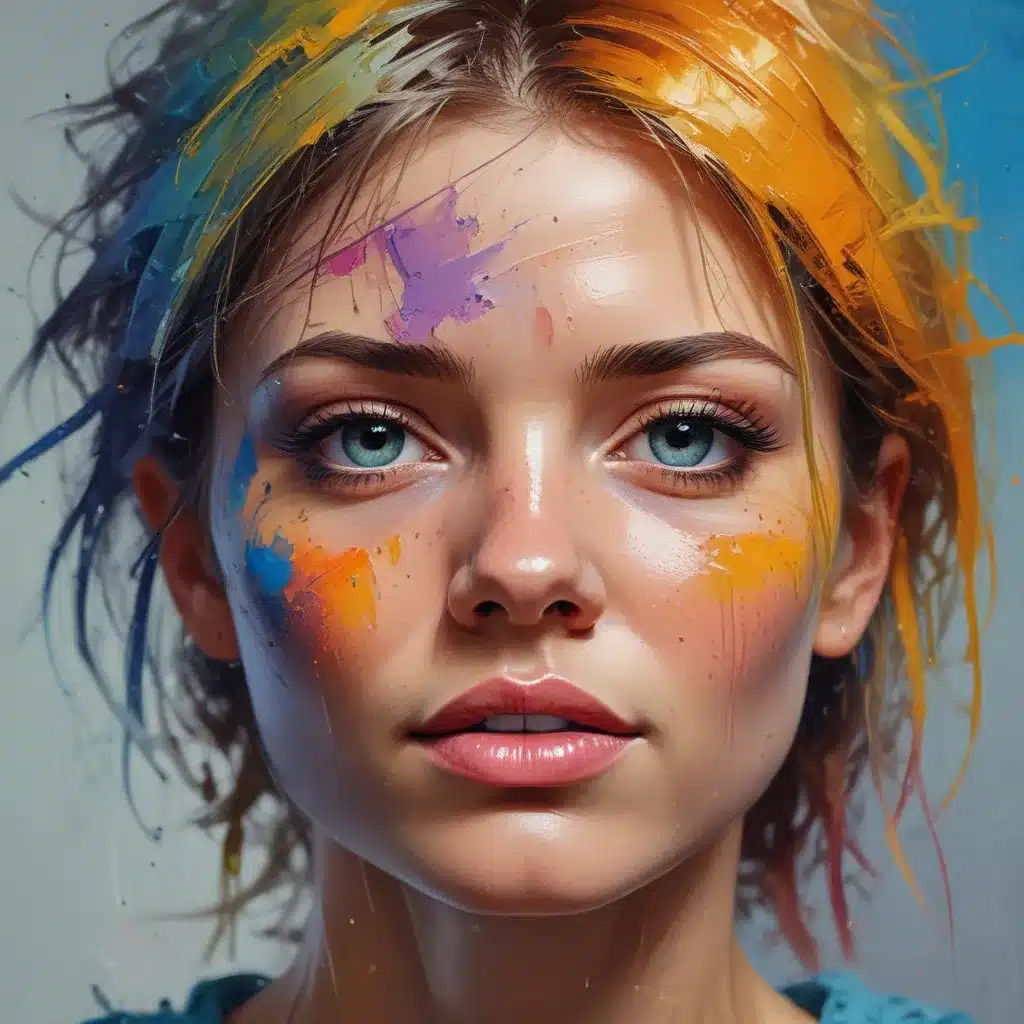
Colour is one of the most powerful tools in an artist’s arsenal when it comes to expressing emotion and evoking a visceral response from the viewer. Through the strategic use of hue, saturation, and contrast, painters can craft compositions that radiate energy, tranquility, or any mood in between. This is especially true when working with the bold, gestural application of paint using a palette knife.
Now, this might seem counterintuitive…
The Emotive Power of Colour
Colour theory has long been studied as a means of understanding how certain combinations and relationships can trigger specific psychological and physiological reactions. Red, for example, is often associated with passion, excitement, and intensity, while blue can inspire feelings of calm, trust, and introspection. Green, on the other hand, symbolizes growth, harmony, and new beginnings. By tapping into these inherent meanings and associations, artists can craft paintings that speak directly to the viewer’s emotions.
Beyond simple colour symbolism, the relative proportions and placements of hues within a composition can drastically shift the overall mood and atmosphere. A dominance of warm tones like oranges and yellows can create a sense of vibrancy and energy, while a preponderance of cool blues and greens may evoke a more serene, meditative quality. Carefully balancing these elements allows the painter to guide the viewer’s emotional experience.
Expressive Palette Knife Techniques
Nowhere is the power of colour more evident than in the realm of palette knife painting. This dynamic technique, which involves using a flat, metal tool to apply and manipulate paint directly on the canvas, lends itself particularly well to the bold, emotive expression of the artist’s inner world. The unique physicality of the process, with its thick, gestural strokes and impasto textures, imbues each work with a palpable sense of energy and immediacy.
One of the key advantages of the palette knife is its ability to blend and layer colours in a way that mimics the organic, spontaneous nature of the human experience. Unlike the precise control of a paintbrush, the knife encourages a more intuitive, expressive approach, allowing the artist to respond to the evolving canvas in the moment. This freedom to experiment and push the boundaries of the medium can result in paintings that are as much a reflection of the artist’s emotional state as they are a representation of the subject matter.
Moreover, the physical act of wielding a palette knife can itself be a cathartic, almost performative process. The artist’s every movement, from the sweeping arcs to the decisive jabs, becomes an extension of their internal emotional landscape. This kinetic quality is often evident in the final work, where the traces of the artist’s hand add an extra layer of depth and authenticity.
Colour and Mood in Palette Knife Painting
When it comes to using colour to convey emotion in palette knife painting, the possibilities are truly limitless. Abstract expressionist painters like Willem de Kooning and Mark Rothko famously explored the emotive power of colour, crafting canvases that pulsed with raw energy and profound introspection. Their bold, gestural brushwork and vast, luminous colour fields have become some of the most iconic and influential works in modern art.
In a similar vein, contemporary palette knife artists continue to push the boundaries of what colour can achieve. Take, for example, the vibrant, almost electric landscapes of Roswitha Heidrich. Her paintings, characterized by thick, rhythmic strokes of paint and a harmonious, yet dynamic, colour palette, evoke a sense of joy and vitality. Heidrich’s work is a testament to the power of colour to uplift the spirit and transport the viewer to a realm of pure, unadulterated emotion.
On the other end of the spectrum, artists like Lisa Elley explore the more introspective, melancholic side of the colour spectrum. Her moody, atmospheric seascapes and floral studies, rendered in muted tones and heavy impasto, convey a sense of contemplation and quiet introspection. The textures and layers of paint create a tactile, almost tangible quality, inviting the viewer to slow down and immerse themselves in the emotional landscape.
Developing Your Expressive Palette Knife Style
Whether your goal is to create vibrant, energetic compositions or brooding, introspective works, mastering the palette knife technique is a crucial step in honing your artistic voice. Begin by experimenting with a variety of knife shapes and sizes, each of which can lend a unique character to your strokes. A wide, flat knife, for instance, may be better suited for broad, sweeping gestures, while a smaller, more pointed knife can be used for precise, detailed applications.
As you become more comfortable with the physical process of applying paint, start to explore the expressive potential of colour. Play with contrasting hues, bold complementary pairings, and unexpected colour harmonies. Allow yourself to respond intuitively to the evolving canvas, letting the paint guide your creative exploration.
Remember, the key to developing a truly expressive palette knife style is to embrace the medium’s inherent spontaneity and physicality. Approach each painting as a journey of self-discovery, allowing your emotions and lived experiences to inform the colour, texture, and energy of your work. In doing so, you’ll create paintings that not only captivate the viewer but also reveal the depth and complexity of your artistic vision.
To further enhance your palette knife skills, be sure to check out the Pencil and Paint Muse website for a wealth of informative tutorials, inspirational artist interviews, and cutting-edge techniques. By immersing yourself in the vibrant world of contemporary painting, you’ll unlock new avenues for emotional expression and solidify your place as a truly masterful artist.
Tip: Practice daily sketching to continually refine your technique